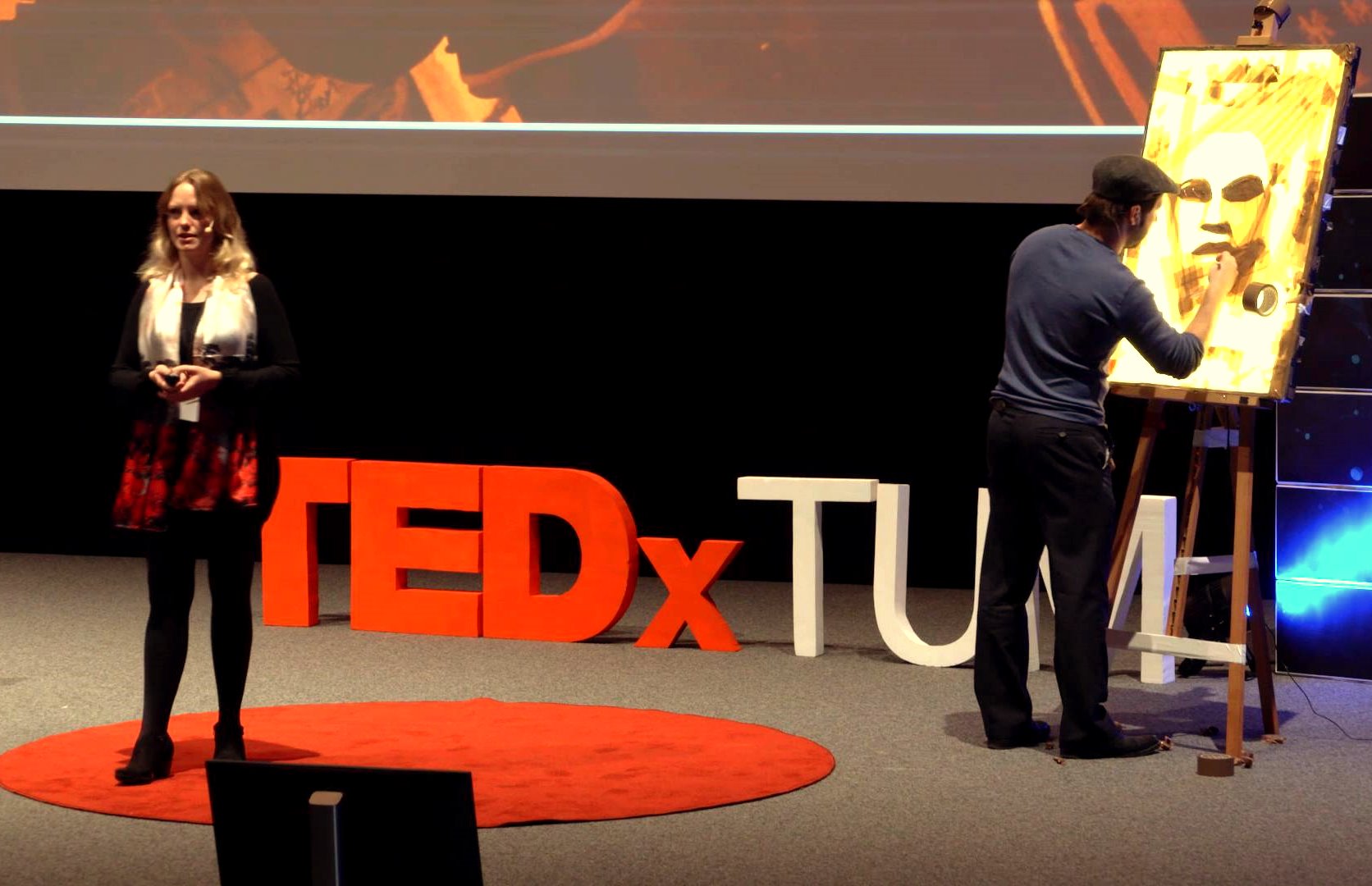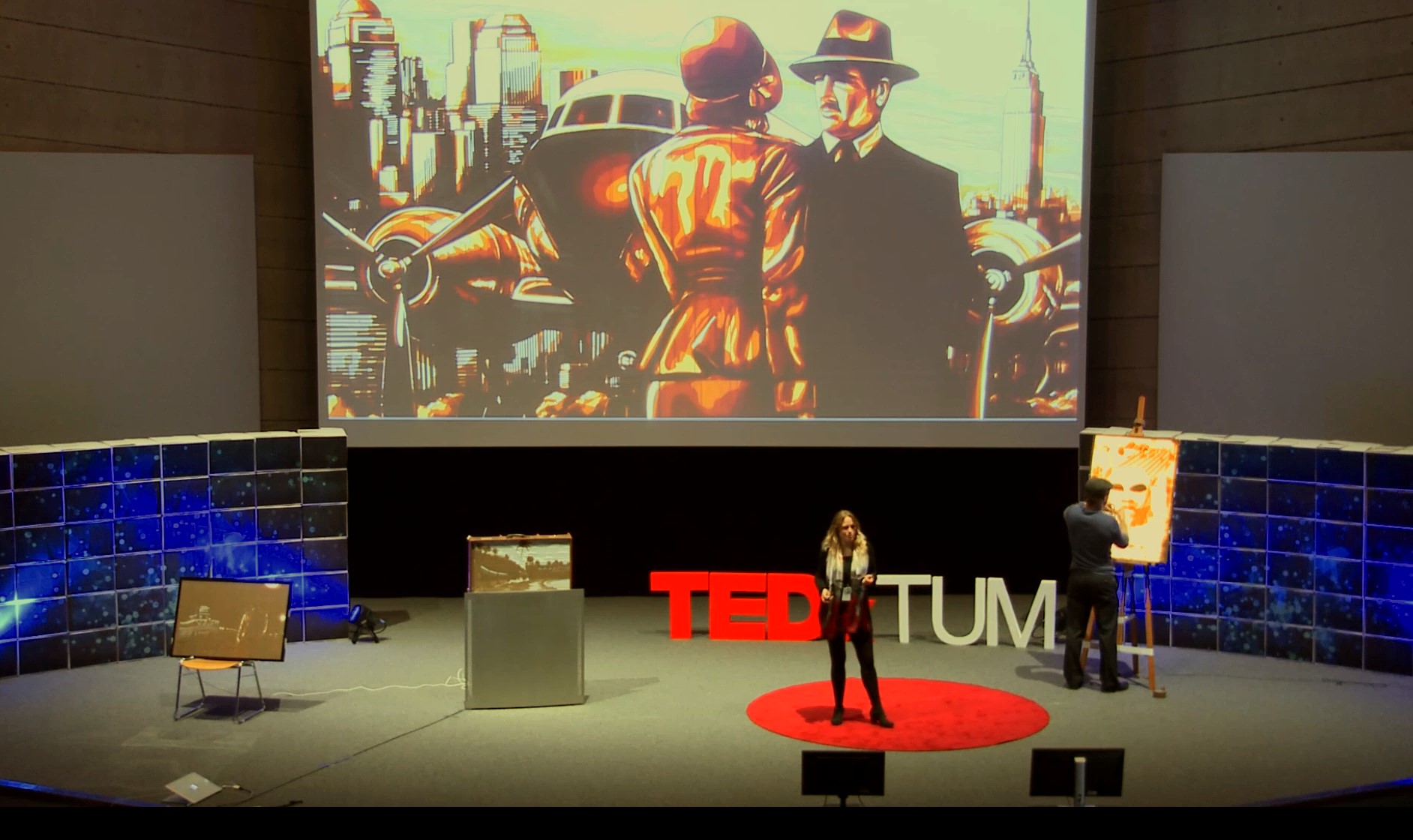Having never gone to art school, Max Zorn’s dream was never to be a “tape artist”. For Max, tape art really was just an idea one night in Amsterdam out of boredom. As Max’s popularity and success grew, Max and his manager, Audrey Sykes, started Stick Together to spread his street art for free to fans around the world. Through this talk and live performance, Max and Audrey try to tell us and show us what makes tape art fascinating. In January 2012 an unemployed twenty-something with a science degree climbed up a streetlamp and stuck on it a portrait made of brown packing tape. It was the start of Stick Together, a project driven by urban tape artist Max Zorn and his manager Audrey Sykes to spread street art at night. Fans around the world received his handmade art with the task of sticking them on their city’s street lights. Max Zorn’s tape art took off as he became the face of a new type of street art for the night. In its first year, Stick Together received thousands of participants from Africa to the Americas. And like the tape layers on his artworks, the layers of Max Zorn’s identity began to add. His identity went from street artist to upcyclist to fine artist to bringing new art to foreign cultures. This is the story of an overnight success that stays alive by being new, shocking, and involving a global community. This talk was given at a TEDx event using the TED conference format but independently organized by a local community. Learn more at http://ted.com/tedx

Max Zorn reveals the precise technique behind his innovative street art, using only packing tape, a blade, and illumination.
Audrey Sykes Max Zorn’s manager and owner of “Stick Together” Gallery:
Let’s say a friend calls you up and invites you to an art fair. Let’s say this art fair is happening in a big place like the Messe Munich. You don’t know much about art, you’ve never been to an art fair, but it’s your friend—it sounds kind of cool and interesting—so you say, “What the heck, let’s go.” You show up, and you don’t know what to expect, but it’s as if the Louvre has exploded all over Messe Munich. It’s not just wall-to-wall full of art, it’s top to bottom full of art. There are hundreds of makeshift walls in between the actual walls, and that’s all full of art as well. Every step you take, there’s a new image, new colors, new shadows and shapes, maybe new expressions and new emotions. It becomes very overwhelming, especially for a first-timer. As you walk around and start to feel like a zombie, your brain gets a bit maxed out. When you pass one of those makeshift walls with artwork on it, you don’t really know what it is. You’re looking at it and say, “Yeah, it looks like a photograph, there’s light behind it, but I don’t really get it.” What’s literally standing out from the wall is the artist—Max Zorn.
Max Zorn goes to all of his exhibitions and all of his art fairs, performing live for good reason. He has his easel, a light box, usually a crowd forming a half-circle around him. You can’t even make out what he’s doing—it looks like he’s got tape, but maybe he’s fixing something that broke. What ties it all together is usually a fast-motion video nearby.
Audrey Sykes:
Hopefully by this time, a spark has gone off in your head, and you say, “Whoa, that guy is this guy, and this guy is making art out of tape.” Everything on that wall—is that also made out of tape? Someone like me is around saying, “Everything you see here is made out of brown packing tape.” The artist uses a scalpel and adds layers of brown tape that, when illuminated from behind, create an artwork. Usually, when this spark goes off in people’s heads, they have three questions: How long does it take to create a tape art? How many rolls of tape does it take? And how did he come up with the idea?
We don’t have concrete answers. Some artworks take up to four weeks or longer. Today, he’s trying to make a record by doing it in 10 minutes. Tape rolls used depend on size and detail—it could be a few rolls or a few dozen. The idea came simply from his hometown, Amsterdam, a nostalgic place, full of brick, historical buildings, and romantic nightscapes along the canals. Max experimented with tape, scalpel, and plexiglass. Before we knew it, he was climbing streetlamps around Amsterdam, tagging the city with tape art. Then Lisbon, Berlin, Paris. People kept asking, “How do you make that out of tape?” So he made the video I just showed. A French network picked it up, televised it, and overnight the video went global. The next morning, he had over a million views on YouTube, thousands of emails, becoming a full-time tape artist overnight.
Now, instead of explaining his technique, he explains to airport security why he travels with a backpack full of packing tape and scalpels.
One thing we noticed after Max became a full-time artist was he had no time to climb streetlamps anymore—he had commissions and clients. So we started “Stick Together,” a project spreading street art for free globally. You sign up on the website, hoping to win a handmade art piece. But you had to find a public place at night, illuminated, and send proof to us. Thousands participated, loving the chance to be street artists themselves.
“Stick Together” highlighted a wide “wow” factor of tape art, leading to unexpected facets. It’s pioneering night-time street art, invisible by day, vibrant by night, and easily transportable. Another facet emerged: tape art as an eco-friendly, upcycling concept—transforming something ordinary into extraordinary. We saw this at events like South by Southwest, promoting eco-design.
A third facet was bringing excitement to areas less focused on traditional art—digital and tech-driven regions like Thailand, Dubai, and China. Tape art became a bridge from the traditional art world to a larger global audience. At major fairs like Messe Munich, we attract art collectors, art lovers, and even security guards—people who’ve never bought art become our clients. They realize they don’t have to be “art-smart” to understand or appreciate tape art.
We aim to continue bringing this excitement to a wider audience, always relying on packing tape being readily available.
Max, you had 10 minutes to create an artwork. How’d it go?
Max Zorn:
I’m not sure—definitely not the best artwork I’ve ever made—but I hope it was enough to show a bit about my process and my fascination with such an exotic material. Working with tape involves unexpected twists. It’s good to have an idea, concept, and plan, but tape’s weird shapes and straight lines turn creation into a musical jam session. You have a theme, but mood and spontaneity shape the layers and coincidences into one final composition.
As an artist, I’m passive and active simultaneously. While creating, I’m also watching how pieces and layers merge into a final artwork, held together by tape’s beautiful sepia tone, adding a nostalgic atmosphere. But what fascinates me most is tape’s interaction with light—how this additional element transforms everything we know about this simple material. This phenomenon isn’t exclusive to tape art; art itself reshapes the world, presenting familiar things in a completely new narrative and light.

Audrey Sykes discusses the storytelling power of Max Zorn’s tape art at TED, as Zorn himself quietly crafts a luminous portrait in real-time.
Sources
https://www.ted.com/tedx/events/16220
https://www.youtube.com/watch?v=sRVxPE1cguo&t=3s
